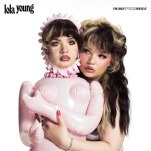Ask the Expert: What’s The Difference Between Vermouth and Fortified WIne?

In our new Ask the Expert series, Paste readers chime in with some of their most pressing booze concerns, and we do our best to help you make sense of it all. Resident expert Jake Emen has spent years on the road traveling to distilleries across the country and around the world, and he’s here to help. Want your own question answered? Send a Tweet to him @ManTalkFood using #AskTheExpert.
Vermouth is getting more love these days, so much so that it’s not unusual for drinkers to request a specific brand when ordering their go-to Martini or Manhattan. Vermouth is even being enjoyed on its own, bringing some Catalonian drinking flair to the states (look no further than The Royal in Washington, D.C., where they make their own vermouth and keep it on tap, for instance). But what is vermouth? And how does it compare to fortified wine?
To begin with, vermouth is actually a type of fortified wine. As we’ve found with other common points of confusion, such as with Cognac vs. brandy, one falls into the larger classification of the other.
So what is fortified wine? It’s a wine… which has been fortified. More specifically, a distilled spirit is added to wine to boost its ABV, but logistically, back in the day this not only gave you a stronger product, but one which was easier to preserve.
There’s a full range of fortified wines, including another which is in the midst of its stateside revival, sherry. Port and Madeira are two other common types of fortified wines, and there’s numerous others as well.
-

-

-

-

-

-

-

-

-

-

-

-

-

-

-

-

-

-

-

-

-

-

-

-

-

-

-

-

-

-

-

-

-

-

-

-

-

-

-

-








































